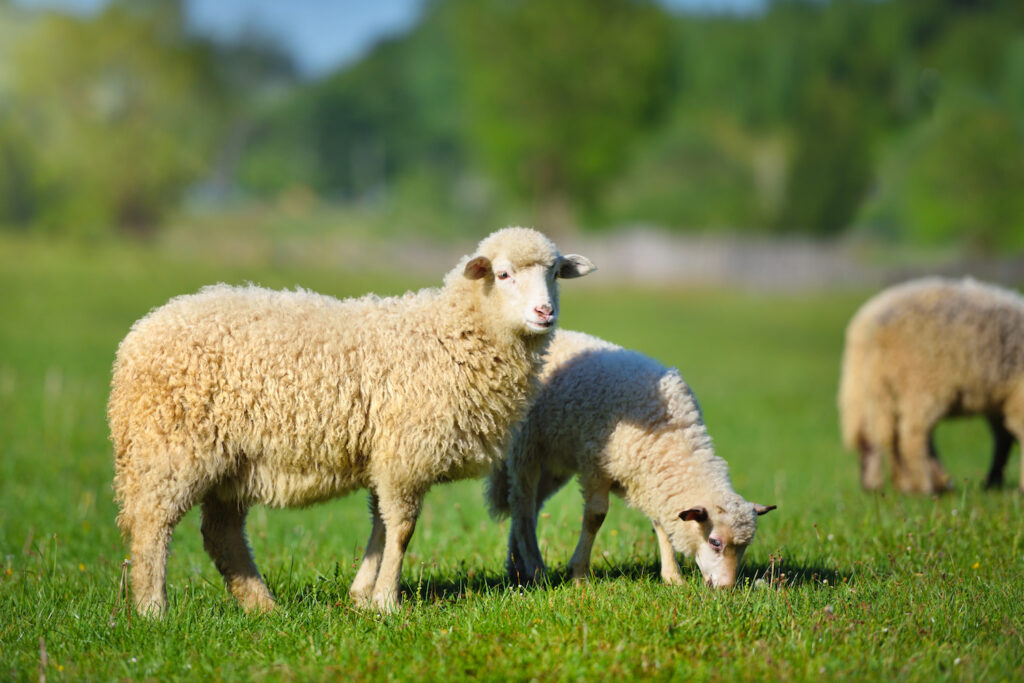‘High levels of engagement’ in sheep scab project
26th November 2021
A recent update on the ‘For Flock’s Sake Let’s Stop Scab Together’ project shows some positive progress in this community-led approach to controlling disease.
It is estimated that there are around 8,000–10,000 outbreaks of sheep scab in the UK every year, with many flocks infested persistently in areas of high scab prevalence.
This comes at a cost of £80–200 million per year to the UK sheep industry and, with some populations of sheep scab mites in the UK now known to be resistant to the injectable macrocyclic lactones, the Sheep Veterinary Society says bringing the disease under control is imperative.
‘For Flock’s Sake Let’s Stop Scab Together’, which started in April 2021, is a project funded by the Rural Development Programme for England (RDPE). Its objective is to demonstrate the effectiveness of a community-led approach to improve the control of sheep scab in three hotspot areas in England.
Progress so far
The levels of engagement and enthusiasm among farmers in the three hotspots has been high according to a recent update from the Sheep Veterinary Society. In some clusters, the coordinators have more farmers than can be funded under current budgets.
By the end of October, 113 sets of blood samples had already been processed and results reported back to the coordinators and vets. Discussion regarding coordination treatments is now taking place in many areas, with farmers being encouraged to plunge dip where scab has been diagnosed and where it is possible to do so.
Rebecca Mearns, senior veterinary advisor at Biobest, where the Elisa blood test has been offered since 2017, said: “It’s good to see the Elisa blood test being used in this way for the RDPE project. Controlling sheep scab in the hotspot areas is a real challenge and if we can use all available tools to make progress in these areas, then it bodes well for control on a wider scale.”
Yorkshire vet Karen Swindlehurst, who is coordinating two clusters, said: “The farmers in my two clusters are really keen to be involved and have come together to share results and plan treatments. We started blood testing at the summer gather and about 20% have proved to be positive so far.
“It has been an amazing response and the discussion has really opened up between neighbours about how they can go about coordinating their treatments. As their vet, the project is also giving me the opportunity to sit down with them and talk through issues such as biosecurity and opening up the way to more proactive health planning in the future.”
As expected, there has been less engagement in areas where there are not the same historical links of cooperation present, for example such as exists between farmers around common grazing. These clusters tend to be less well defined and this has been a particular challenge in the Midlands, where independent sheep consultant Kate Phillips has been driving the project in the Long Mynd and Stiperstones area of Shropshire.
“So far, we have about 75 farmers signed up and have tested over 50 flocks with about a quarter proving positive,” she said. “Our local vets have been extremely supportive and the team is working very well together.”
What does the project involve?
The three hotspot areas in England where scab currently presents a persistent problem are: The North (coordinated by CFN); the Midlands (coordinated by ADAS) and the South West (coordinated by NSA).
Within each hotspot, there are a number of ‘clusters’ of farms that share common boundaries or use the same common grazing, where the aim is to foster cooperation in the control of scab.
In each cluster, farm vets work directly with their farmer clients and with the regional coordinators, resulting in close working relations.
The project, which runs over two years, offers up to 300 participating farmers a unique combination of on-farm advice, best practice training, and free blood testing using the sheep scab Elisa test developed by Moredun. It also covers the costs of visits by their local veterinary surgeon to allow two sets of blood samples for Elisa testing, plus a face-to-face advisory visit by the vet for each farm to discuss scab control and biosecurity.
The Elisa results for each farm are carefully analysed in relation to the scab-history of the farm in question and its neighbours, before advice is given about whether treatment, or follow up monitoring and inspection, are required.

